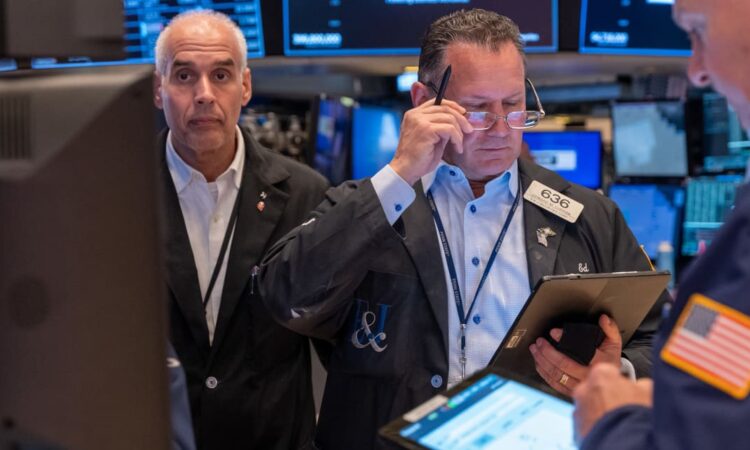
Short sellers are supposed to keep the market’s sunny optimism in check. Lately, these bears have all but disappeared. When they finally return, it could give complacent investors a case of whiplash.
So far, it is shaping up to be a great year for stocks. The
has returned 15% so far, exceeding all but the rosiest expectations. In the face of giant gains, short sellers, or investors who bet against the market, are throwing up their hands.
Short interest in two of the biggest exchange-traded funds, the
and the tech-focused
Series 1—both commonly used as market proxies—is at six-year lows, according to a recent note from
As recently as 2023, the value of short bets amounted to as much as 15% of the funds’ total values, according to JPMorgan. Today, both are below 9%.
Amid a sustained bull market some bears may be simply giving up. More onerous regulatory rules and the recent meme stock craze that burned some short sellers also play roles, according to J.P. Morgan.
Either way, the retreat of short sellers has probably helped inflate stock prices and dampen recent market volatility. Bears have become steady stock market buyers as they move to close out their positions. Think of it as a kind of marketwide, slow-motion short squeeze.
Advertisement – Scroll to Continue
The dynamic, notes J.P. Morgan, poses a potential problem for investors. Once market sentiment starts to sour, those short sellers could rush to re-establish bearish bets, giving an already vulnerable market a gut punch.
In addition to bears’ hibernation, there are other reasons to be worried the market’s rally may not be as sturdy as it looks.
While short sellers have been heading for the exits, there are signs
investors are getting ready to pile in. The share of individual investors who expect the market to be higher in a year’s time has jumped over the past nine months, from around 35%, where it spent most of 2023, to around 40% today, according to a recent
note.
Advertisement – Scroll to Continue
“Households turned bullish on equities when the Fed started talking about rate cuts,” the firm said.
A bullish attitude among small investors tends to be a negative sign for markets since Main Street investors tend to grow excited about stocks only at the end of bull markets when stock prices have outrun their fundamentals.
There is also the nature of this bull market itself, with most of the market’s gains powered by a relative handful of tech stocks benefiting from investors’ excitement over artificial intelligence. The situation has drawn plenty of comparison with the late 1990s Internet bubble.
So if 2024’s stock market rally looks increasingly fragile, how can investors protect themselves?
One obvious is to simply stay the course with bonds, which have been a sore disappointment. Investors entered the year expecting a bond rally on rate cuts that never materialized. Instead, funds like the
Advertisement – Scroll to Continue
iShares Core U.S. Aggregate Bond ETF
are essentially flat in 2024 and underwater over the past three years.
All the same, bonds can still serve to dampen a portfolio’s volatility, and
have declined from a high of 4.71% in May to about 4.26% today as investors grow increasingly confident of a rate cut later this year. (As bond yields decline, bond prices increase.)
Investors who are looking for downside protection within their stock portfolios can also consider covered-call funds, like the
J.P. Morgan Equity Premium Income ETF,
the largest active ETF. The funds write out-of-the-money call options on stock market indexes. That means investors miss out on some of the upside but pocket the call premiums which translate into extra yield—and a significant cushion when stock prices decline.
Write to Ian Salisbury at ian.salisbury@barrons.com
